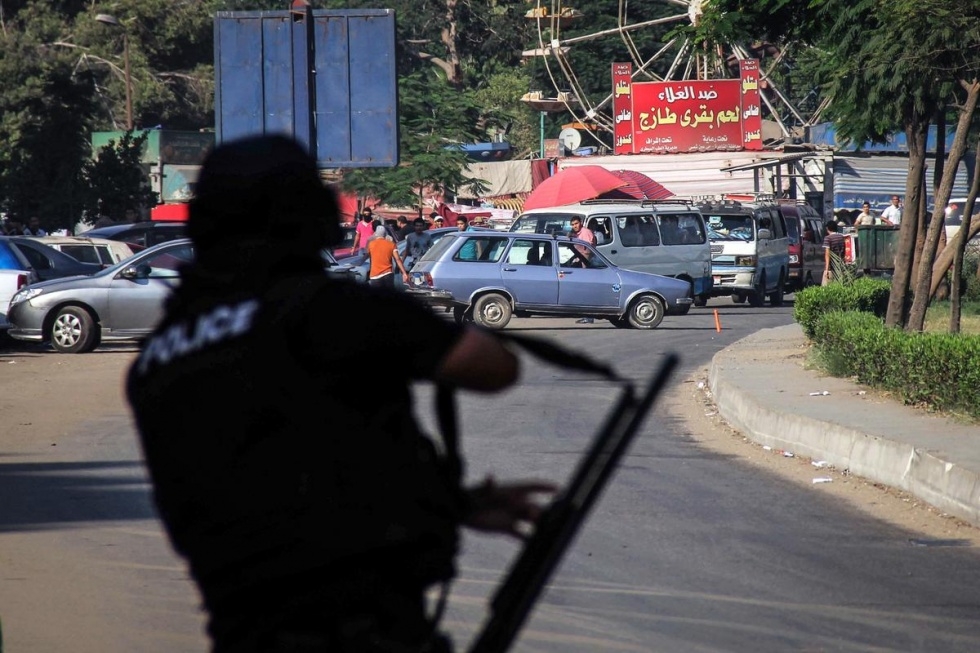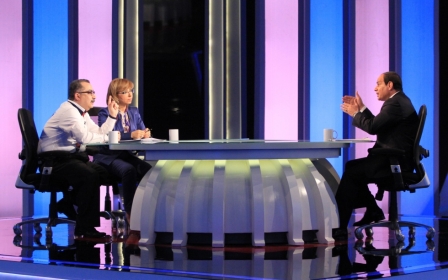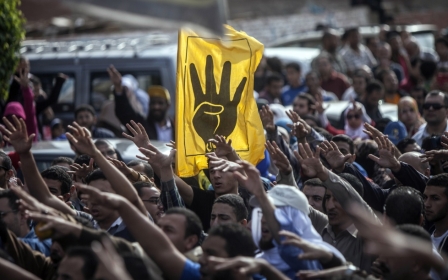Egypt’s invisible protesters, one year after the coup

During an interview about Egypt with a major Western media outlet three weeks ago, I mentioned the anti-coup protest movement in the country and its relevance as an oppositional force in Egypt’s post-coup political order. The Washington-based journalist who was interviewing me wondered about my assertion, telling me that, according to his knowledge, the protests were small, infrequent and insignificant.
Much Western media coverage of Egypt has failed to offer up the kind of context, nuance, and balance necessary to give news audiences a full sense of the debate and contestation inside the country. Coverage of Egypt’s mass death sentences, jailing of journalists, and human rights abuses notwithstanding, Western reportage has, at least on some issues, surrendered to the Egyptian military’s narrative. In particular, many Western media outlets seem to have adopted the Egyptian government’s account that ongoing protests are small and not representative of a significant trend. Western media outlets have largely ignored the anti-coup protest movement that has continued unabated for 365 consecutive days.
The Egyptian military and an obsequious media industry have, for one year, suggested that:
- “The nation” - represented quantitatively by absurd anti-Morsi protest estimates offered up last year - rose up against the Muslim Brotherhood and supported Morsi’s forced removal
- only a tiny minority of Egyptians has opposed the events of July 3 of last year
The reality, however, is quite different.
Contrary to Egyptian media reports, there were not 33 million Egyptians protesting against the Brotherhood last June 30. According to crowd-sizing experts, protest numbers were closer to one or two million people across Egypt. More importantly, empirical evidence suggests Egypt is a deeply divided society. The Brotherhood and their Islamist allies won five consecutive free-and-fair elections in 2011 and 2012. Electoral dominance cannot be achieved without considerable popular support.
Moreover, a December 2013 poll by Zogby Research Services showed that about half of Egyptians opposed Morsi’s forced removal from office. Both the Zogby poll and a separate poll conducted by Pew this Spring showed that more than 40% of Egyptians continue to support ousted President Morsi, who has been imprisoned for one year and absurdly charged with an assortment of felonies, including espionage.
By using lethal force on unarmed protesters, on the one hand, and physically preventing access to large protest sites, on the other hand, the Egyptian police and military have successfully thwarted the kind of large protests that make for media spectacles. Last August, the Egyptian security forces killed hundreds of protesters at Rabaa, Nahda, and Ramses squares. Later, the government used military tanks to prevent access to major squares, including Tahrir Square. The government has also arrested more than 40,000 people, most for nonviolent political crimes. These measures have forced the protest movement to fragment into many smaller marches.
On large protest days, dozens of marches are held across Egypt. But, because they are not centralized, and because each individual march is considerably smaller than a large demonstration at a major square, the protests may appear small, or - unless someone is watching Al-Jazeera Mubashir Misr (the only network to offer up any consistent coverage of anti-coup protests) - non-existent. Importantly, these marches are also not media-coverage-friendly because they are not stationary and not very large.
To be fair, Western journalists are not exactly welcomed inside Egypt at the moment, and covering protests that are regularly fired upon by snipers is dangerous work.
But the coverage, or lack thereof, represents a stunning success for Egypt’s military government, which has successfully prevented a media spectacle that might project unpopularity, instead rendering anti-coup protesters Orwellian “unpersons.” The lack of coverage, though, also represents the failure of western media outlets to contextualize Egypt for news audiences.
Mohamad Elmasry is a Visiting Scholar at the Center for Middle East Studies at the University of Denver and an incoming Assistant Professor in the Department of Communications at the University of North Alabama. Previously he was Assistant Professor and Graduate Director in the Department of Journalism and Mass Communication at The American University in Cairo (AUC). His work has appeared in the Journal of Middle East Media, the International Communication Gazette, the Journal of Arab and Muslim Media Research, International Journal of Communication, Global Media Journal, Political Violence @ a Glance, Al Jazeera English, openDemocracy, The Immanent Frame and Jadaliyya, among other publications.
This article was originally published by Pulse Media. Republished with permission.
The views expressed in this article belong to the author and do not necessarily reflect the editorial policy of Middle East Eye.
Photo Credit:Egyptian security forces intervene to stop anti-coup demonstrators in Cairo on 3 July, 2014 (AA)
New MEE newsletter: Jerusalem Dispatch
Sign up to get the latest insights and analysis on Israel-Palestine, alongside Turkey Unpacked and other MEE newsletters
Middle East Eye delivers independent and unrivalled coverage and analysis of the Middle East, North Africa and beyond. To learn more about republishing this content and the associated fees, please fill out this form. More about MEE can be found here.





